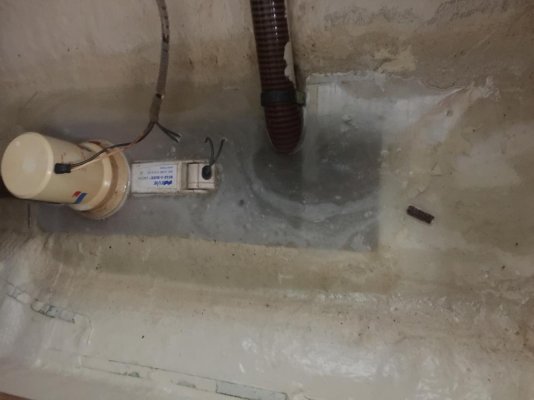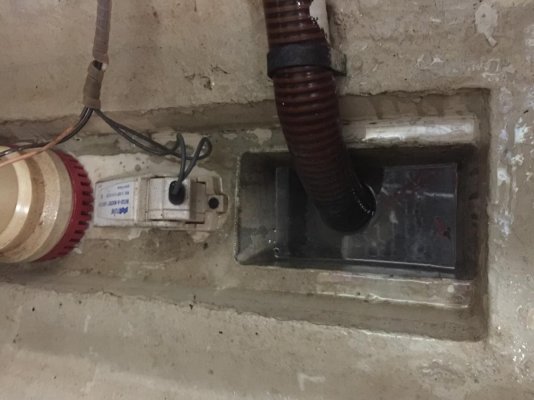Going to go with water sensing/auto as not much room for a float switch. How dependable are these pumps that check for water every 2 minutes or so? Any down side to that?
When my first stage bilge pump failed, the technician replaced it with an auto/sensing pump. The second stage (large volume) pump is still a Rule with float switch so I have a side-by-side comparison. I vote for the float switch unit....here is why.
1) Before I leave the dock, I go below decks to inspect everything (engines, filters, etc) including my pumps. I just lift the float switch, and this confirms function of both switch and pump. For the auto-sensing unit, I have to climb out of the ER and use the manual override on the pump control switch at the helm. No way to trip it with my finger.
2) The auto sensing pumps can start cycling, usually due to debris in the sensor. Just a small amount of debris causes the sensor to mis-read and they start cycling (despite an empty bilge). You can set the duty cycle length, but they default to a 2 minute or so backup when the sensor is triggered and so they keep coming on relentlessly. Yes, you now know its time to clean unit, but in the middle of the night, you probably need to go down below decks and make sure you are not taking on water.
3) The frequent cycling is annoying at night. My pumps are below the master cabin. When they cycle, I wake up !! If they keep cycling, I don't fall back asleep. I boat to enjoy the peacefulness of a quiet anchorage. Sleep is an important part of the trawler experience.
4) If you can't figure out the problem in the middle of the night, you resort to turning off the pump (at the master switch). Not a good idea, especially on a stormy night. You are defeating an important safety feature at the worst time.
5) Useless cycling is a (small) but unnecessary battery drain.
I never had these problems with the float switch units. Disclaimer: I have no experience with diaphragm pumps or the other equipment discussed on the Forum.
Just my 2 cents.


